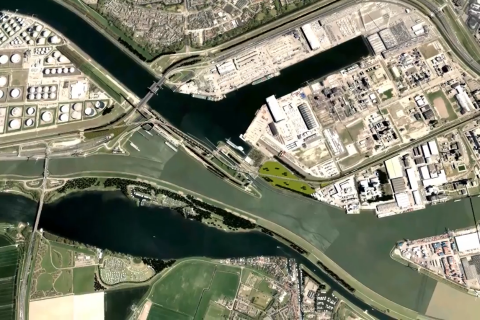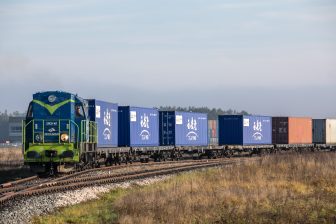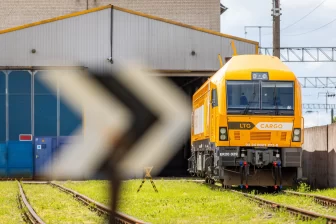
Port of Rotterdam expands railway line, terminal capacity
The Port of Rotterdam Authority (PRA) has awarded the contract to construct the substructure for the Theemsweg route, a steel vertical-lift bridge for trains, cars and slow-moving traffic and an important link on the Betuweroute. At the same time, it has started constructing the infrastructure for the Container Exchange Route (CER), which will link the rail terminals, deepsea container terminals, empty depots, and distribution companies at Maasvlakte, the man-made extension of the port.
The contract for the construction of the Theemsweg substructure has been awarded to the SaVe consortium, comprising of Besix, Mobilis, Dura Vermeer, Hollandia and Iemants. The project is of great relevance, as the railway to and from the Port of Rotterdam is about to reach its maximum capacity due to the expected increase in rail freight transport and ocean shipping to and from Brittanniëhaven.
Increased capacity
The construction of the Theemsweg route provides a solution to this bottleneck. Traffic will be re-routed across the Rozenburgsesluis and via Theemsweg, which is expected to result in increased freight train traffic which is no longer hindered by shipping traffic. This will improve the railway connection between the western port area and the hinterland, as it is a connection on the Betuweroute as well as an access link to Brittanniëhaven for ocean shipping, the PRA explained.
It is expected that works will start during the course of 2018 and be completed by 2020. The contract is a subproject of the Theemsweg route construction: following completion there will be a phase in which the superstructure is constructed, which includes the railway and all associated systems.
Container Exchange Route (CER)
The Port Authority has also contracted consortium KWS Infra B.V. & Van Hattum en Blankevoort B.V. to construct a robust concrete road outside the industrial parks of the container companies at Maasvlakte, as a first step in the CER project. The goal of this project is to reduce exchange costs between the various companies and further improve connections with the European hinterland.
Ronald Paul, Chief Operating Officer at the Port Authority: ‘The CER offers the opportunity to combine container streams, which means that trains, inland vessels and feeder vessels no longer need to go to the different terminals. With the CER, the Port Authority is introducing a completely new, advanced and unique system. The CER will improve links between container terminals at Maasvlakte and reduce congestion, which will result in cost reductions and further improvements to the Port of Rotterdam’s competitive position as container hub.’ The CER is scheduled to be fully completed and operational by the end of 2020.






The Caland bridge is a 48 year old steel vertical-lift bridge for trains, cars and slow-moving traffic. After renovation only rail-traffic will be re-routed over the new fixed rail-only viaducts of the Theemsweg route.